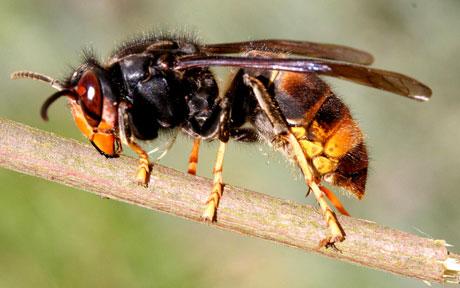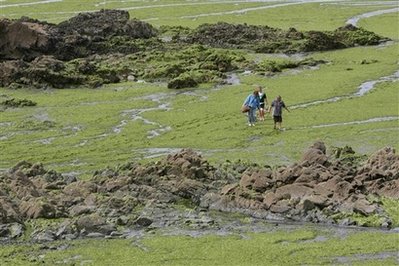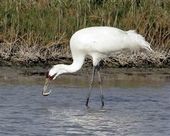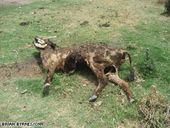
© Agence France-PresseAn Asian predatory wasp (vespa velutina), a predator of honey bee hives, which has installed itself in several southern regions of France
The bee-eating hornets, instantly recognisable by their yellow feet, are rapidly spreading round France and entomologists fear that they will eventually cross the Channel and arrive in Britain.
Hundreds of the insects attacked a mother on a stroll with her five-month-old baby in the Lot-et-Garonne department, southwestern France, at the weekend before turning on a neighbour who ran over to help. The baby was unharmed.
They then pursued two passers by and two Dutch tourists on bikes. The victims were treated in hospital for multiple stings, which are said to be as painful as a hot nail piercing the skin.
In the same week, a cleaner in local primary school came under attack after disturbing a hornet nest hidden in the ground.
The
Vespa velutina, which grow up to an inch in length, is thought to have arrived in France from the Far East in a consignment of Chinese pottery in late 2004.



